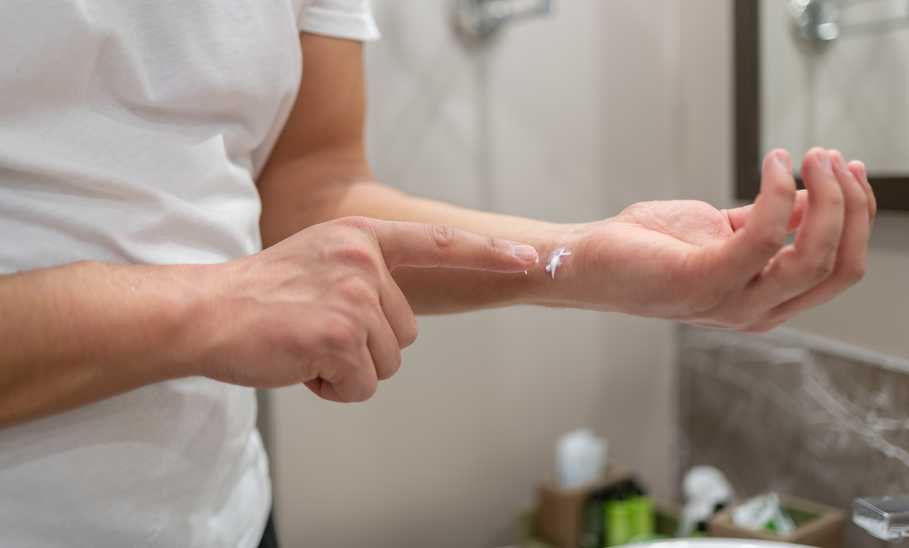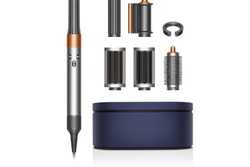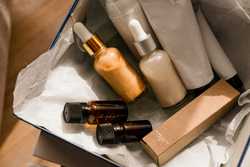- Type: Cream
- Size: 1.5 ounces
- Key ingredients: Panthenol (pro-vitamin B5), allantoin, zinc oxide
- Price on publish: $21
Best Scar Cream: 10 Effective Options for Smoother Skin

Our evaluations and opinions are not influenced by our advertising relationships, but we may earn a commission from our partners’ links. This content is created by TIME Stamped, under TIME’s direction and produced in accordance with TIME’s editorial guidelines and overseen by TIME’s editorial staff. Learn more about it.
Scars are a fact of life—some of us have big ones, and some of them have small ones, but almost everyone has a physical reminder of a tumble, acne, or surgery. I've had a large scar on my upper lip since I was in a car accident in my teens. A dermatologist initially helped me, but I've been searching for the perfect scar cream for ages. I've curated a list of the top performers based on proven results, quality ingredients, and scientific backing to help you fade scars and have smoother, healthier skin.

We love that the Derma E scar cream has zinc oxide, a powerful ingredient that protects skin from the sun's rays while not clogging your pores. With an SPF of 35, this cream can serve as an everyday primer while diminishing your scars—a win-win. Its active ingredients for scars are allantoin, a hydrating ingredient that also has exfoliating properties and is generally considered non-irritating for all skin types, and panthenol, an emollient ingredient that aids healing. Shopping tip: Derma E also made our list of the best face washes for oily skin.
After surgery, it’s better to opt for a medical-grade product instead of a standard cream. CICA-CARE Silicone Gel Sheet is a medical-grade silicone sheet designed to manage scars, particularly hypertrophic and keloid scars. Rest easy knowing these sheets are the go-to option for many hospitals, dermatologists, and surgeons. The sheets are made from soft, breathable, durable silicone material that adheres comfortably to the skin.

I love that Topicals’ Faded Serum comes in trendy packaging because it never leaves my bathroom counter! This serum has been proven to reduce hyperpigmentation across various skin types and concerns. One word of caution: Reviewers recommend easing into this to avoid skin purging—a term that refers to an increase in breakouts, including white heads and black heads, as a skin response to a product that has ingredients designed to speed up your skin’s cycle of shedding cells.

If you're looking for an all-in-one scar-reducing solution, try Sunnie ScarSmooth™. This kit includes medical grade silicone scar tape, ScarSmooth™ Medical Grade Scar Gel 30 ml, and a 24K Gold Vibrating Beauty Bar. This kit has proven results for C-sections, keloids, and surgery scars.

Mederma's Stretch Marks Therapy aims to minimize the visibility of stretch marks caused by pregnancy, growth spurts, or other factors. The unique blend of botanical extracts and hyaluronic acid improves skin elasticity and hydration to help diminish the appearance of stretch marks over time.

This gentle formula is designed to minimize common childhood scars from cuts, scrapes, and more. Mederma for Kids is easy to apply and has a kid-friendly smell and texture, which makes it a hassle-free experience for kids and adults alike.
A dermatologist-trusted scar cream with a fun twist to making treating scars fun.
Biafine Act Emulsion is an excellent choice for treating scars from burns. With the first application, you’ll experience a cooling sensation, and the formula has a semi-occlusive effect to protect the burn from contaminations, help prevent infection, and get you on the path to scar-free healing.

While AWD Medical Silicone Scar Tape isn't technically a cream, it deserves a mention for its impressive scar-reducing abilities. This medical-grade silicone tape mimics the skin's barrier, keeping it hydrated and protected which reduces discomfort and itching while flattening and softening scars over time. Plus, it's reusable, painless to remove, and discreet enough to wear under clothing.
A scar tape that hydrates and protects your scars while offering comfortable, all-day wear.

HealFast Silicone Scar Gel is physician-formulated and made with 100% medical-grade silicone, proven to minimize both new and old scars effectively. This odorless, colorless gel hydrates and protects the scar, promoting a flatter, smoother appearance in as little as four weeks, although many reviewers mention seeing results sooner.

Mederma’s PM Intensive Overnight Scar Cream is a good overall cream if you’re unsure what to get. It addresses scars from surgery, injuries, and acne. Some improvement can be seen in as little as 14 days but results can take three to six months for old scars. If you’re dissatisfied, they have a money-back guarantee.
There are different kinds of scars and the recommended treatment for each varies. Identifying the type of scar you have is the first step to treating it effectively. If you’re unsure what type of scar you have, a dermatologist can help you determine that and which ingredients are most effective to help fade the scar.
Scar creams have similar ingredients to moisturizing formulas like night creams, creams for eczema, and eye creams. However, like stretch mark creams for pregnancy, there are specialized ingredients included to help address scars:
A scar cream with SPF will help prevent the UV rays from causing further discoloration of your scar. For extra protection, make sure you’re wearing an additional SPF, whether it’s a mineral sunscreen, tinted sunscreen, or sport sunblock.
There are a lot of products on the market that claim to reduce scars, and while you can discover great formulas from brands you haven’t heard of, remain skeptical of claims. A cream can reduce the appearance of scars, but there is a limit on what over-the-counter ingredients can do. If a product seems too good to be true, it probably is. If you’re having a hard time finding information on the product, proceed with caution.
When choosing the best scar creams, I searched for the top-reviewed products that are medically backed and have proven results. The most important feature in my search was finding options from reputable skincare companies that are trustworthy, thoroughly tested, and vetted by scientists to ensure safety.
I prioritized cost, as scar creams require application over an extended period and may need to be purchased multiple times to see peak results. I also looked for options that had silicone and hyaluronic acid, as both are reliable ingredients for reducing the appearance of scars. I leveraged reviews, ratings, and studies to ensure I recommended the best scar creams the market offers.
One of the most common causes of these scars are acne, chickenpox, or other conditions. These flat, indented scars form from a loss of underlying tissue.
More common in people with darker skin tones, these scars are raised, red, and remain within the boundaries of the original wound.
These can be some of the most challenging scars to treat. They are raised and itchy and grow beyond the boundaries of the original injury. They are more common in people with darker skin tones.
Often caused by burns or deep wounds, contracture scars tighten and contract the skin, limiting movement.
These scars occur when the skin stretches rapidly, such as during pregnancy or puberty. They are usually pink or red initially but eventually fade to a silvery shade.
Using scar cream effectively requires consistency and patience. Here's a general guide:
Clean the scar area with mild soap and warm water. Pat it dry completely.
Follow the specific instructions on your chosen cream. Most recommend a thin layer massaged gently onto the scar and surrounding skin. Avoid open wounds or irritated areas.
Leave the cream to fully absorb, which might take minutes, depending on the formula. Some require drying before covering them with clothing.
Apply as directed, typically once or twice daily. Long-term use, often months, is usually required for best results.
Protect the scar from sun exposure with sunscreen, SPF 30 or higher, to prevent darkening. Moisturizing the surrounding skin can also aid healing.
Many scar creams contain ingredients like hyaluronic acid or glycerin that attract and retain moisture in the scar tissue. This helps to keep the scar soft and supple, making it less noticeable.
Scars form due to an overproduction of collagen fibers during the healing process. Some scar creams contain ingredients like silicone or Centella asiatica extract to regulate collagen production, leading to a flatter and smoother scar.
Scar creams often create a physical barrier on the skin, shielding the scar from further irritation or sun damage. This can help prevent the scar from becoming darker or more raised.
Some scar creams contain ingredients like aloe vera or vitamin E that have anti-inflammatory properties. This can help to reduce redness and itching associated with new scars.
As with any topical product, scar creams can trigger allergic reactions in some individuals. Professionals recommend testing a new product on a small patch of skin and waiting 24 to 48 hours to determine if there are any reactions. The most common irritants in scar creams are fragrances, preservatives, botanical extracts, sunscreen ingredients, and silicone.
Early intervention is crucial to successfully reducing the appearance of scars, so don't hesitate to visit a doctor to determine the proper treatment path. However, it's essential to seek medical attention immediately if you notice signs of infection, excessive bleeding, rapid growth, discoloration, new pain, or a suspected allergic reaction. If you are feeling significant pain or discomfort, a limited range of motion, or concerns about the appearance of your scar, consider seeing a doctor. Consider seeing a doctor for keloid and contracture scars, as they typically require a specialized approach.
The general rule of thumb is that gels and creams are great for new, flat scars, while sheets are more effective for raised scars, but people with active lifestyles may struggle to maintain them.
The efficacy of scar creams depends on how they’re used and the type of scar. Scar creams are an essential part of scar management, but they are just one element of treatment and should be used alongside proper wound care, sun protection, and potentially professional treatments. Setting realistic expectations and seeking expert advice to lay out the correct treatment plan for you is important.
Results vary depending on the type of scar and the scar cream selected, but many people see minimal improvement in hydration, texture, or discomfort within a few weeks and visible scar reduction within three to six months of consistent use.
You will want to begin your scar management regimen once the wound is completely healed. Treating new scars is much easier than treating older scars. Many people find applying scar cream alongside their evening skincare routine the most effective way to allow the cream to absorb into your skin fully.
The information presented here is created by TIME Stamped and overseen by TIME editorial staff. To learn more, see our About Us page.



